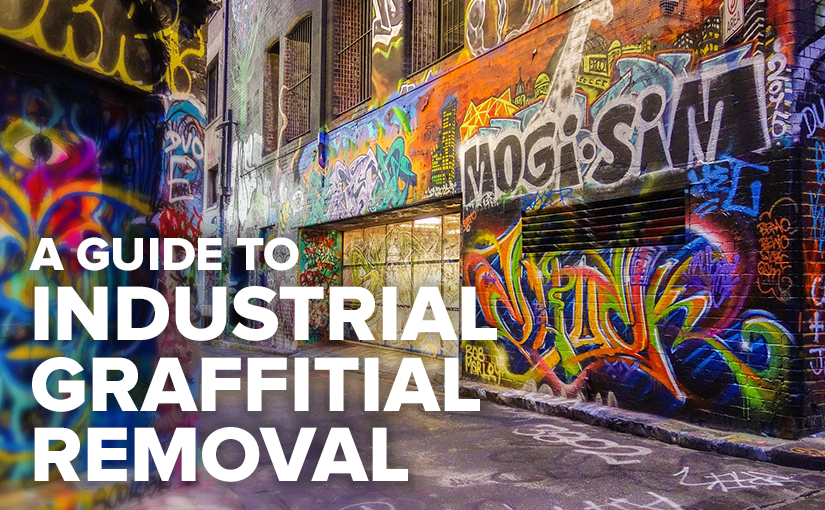Since caveman days, humans have been expressing themselves through art and words on the surfaces of their environment. Yet in today’s world there are many artistic mediums available, and expression becomes vandalism when it involves somebody else’s property.
While some graffiti can make a statement, it often causes more harm than good. Graffiti can damage a business, especially if the artwork features offensive lewd imagery or fowl words, by corrupting the appearance and professionalism of the building, as well as giving customers a negative connotation about the surrounding area. As location is a big factor for the success of many businesses, it’s important to ensure that your location is clean and orderly.
Graffiti comes in many forms—spray paint, chalk, marker, stickers, etching—and affects different types of environments including offices, schools, arenas, parks, medical facilities, and manufacturing plants. Indoor vandalism can come in the form of pen, marker, or stickers on desks or bathroom stalls, while outdoor vandalism often comes in the form of spray paint on a multitude of surfaces.
Graffiti can cause permanent damage, so if your building gets tagged, it’s important to act quickly!
WHO SHOULD CLEAN UP THE GRAFFITI?
The responsibility of cleaning up graffiti usually falls on a building’s maintenance department, however, governmental units often have their own graffiti-removal programs. Additionally, some schools and other buildings will call the local police to photograph the graffiti for a report, so make sure you’ve gone through all the appropriate channels before digging into the dirty work.
HOW TO REMOVE GRAFFITI
When removing graffiti, regardless of method, you should work from the outside to the center, rather than across the stain, so it doesn’t spread to clean area. On any surface, using abrasive materials too aggressively can also leave the graffiti’s pattern scratched or shadowed into the surface.
To tackle graffiti on vertical surfaces, you can rely on foam or paste cleaners that will stay in place. For minor pen or pencil graffiti, often you can use a household cleaner or disinfectant, then dab (don’t rub) the area and neutralize with water to remove it. For etching, try filling in scratches with paint softener.
Below are some tips on how to remove graffiti from a variety of surfaces:
Brick, Concrete, & Masonry
- Apply baking soda-based products
- Rub with steel/bronze wool or sandpaper
- Power-wash with a 3000psi pressure washer
- Sand-blast
Metal
- Apply paint thinner
- Rub with steel/bronze wool or sandpaper
- Power-wash with a 3000psi pressure washer
Wood
- Apply mineral spirits (only if wood is painted, stained, or sealed)
- Apply citrus-based cleaners (for ink)
- Power-wash with a 3000psi pressure washer
- Sand the wood and repaint
Glass
- Apply paint thinners
- Scape off with a razor blade
- Rub with ultra-fine bronze wool with water
Plastic
- DO NOT apply paint thinners
- Rub with ultra-fine bronze wool
GRAFFITI? GONE!
Before trying any of the above solutions, why not try out U.S. Standard Product’s Graffiti Gone W.B. solution? Part of our Industrial Solvents and Degreasers collection, this solution is specifically designed to remove graffiti from all surfaces.
Graffiti Gone is a high viscosity, water-based graffiti, urethane, paint, and varnish remover formulation containing no harmful methylene chloride. Graffiti Gone can be used on metal, concrete, brick, marble, stone, soft woods, and plaster. This fast-acting formula penetrates and softens multiple coats for easy removal.
This solution is available in 1-gallon volumes, order yours today from U.S. Standard Products.
Start exploring your industrial cleaning options by downloading our free catalogue or calling 844-877-1700. To stay up-to-date on the latest in workplace safety news and trends, follow US Standard Products on social media: Google+ | LinkedIn | Twitter | Instagram | Facebook

